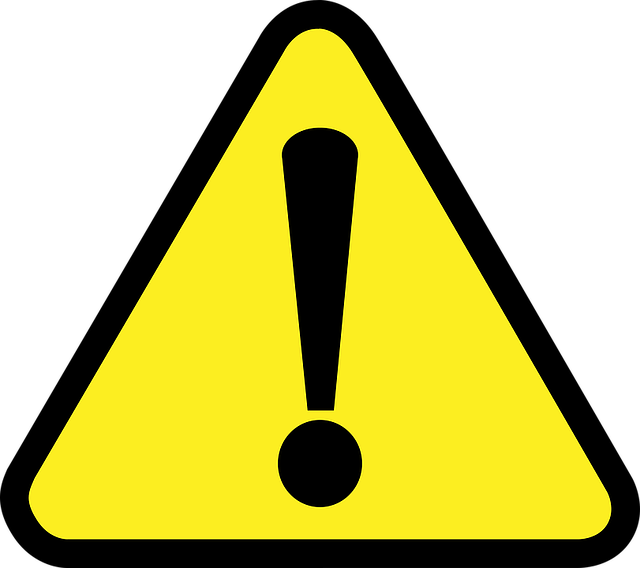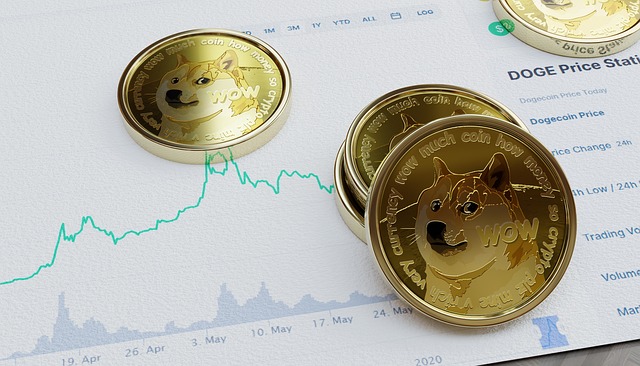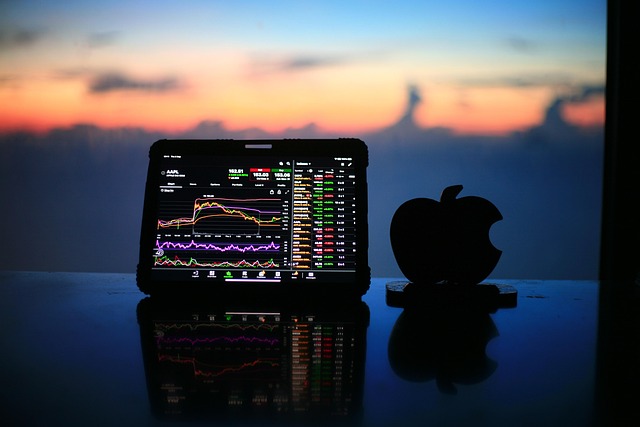Best Crypto Trading Signals Free: Top Strategies and Tools
Author: Jameson Richman Expert
Published On: 2025-10-20
Prepared by Jameson Richman and our team of experts with over a decade of experience in cryptocurrency and digital asset analysis. Learn more about us.
The search for the best crypto trading signals free is one of the first steps many traders take when they want to improve entry and exit timing without paying high subscription fees. This comprehensive guide explains what free crypto trading signals are, how they work, which free sources are trustworthy, how to evaluate them, and how to use them within a complete trading plan. You’ll find actionable checklists, examples, risk-management rules, and links to authoritative resources so you can evaluate free signals intelligently and avoid common pitfalls.

What Are Crypto Trading Signals?
Crypto trading signals are alerts or trade suggestions that tell a trader to buy, sell, short, or set stop-loss/take-profit levels for a cryptocurrency. Signals are generated in several ways:
- Manual analysis: Signals issued by experienced traders or analysts who interpret charts, news, and market flow.
- Indicator-based systems: Signals triggered by technical indicators like RSI, MACD, moving averages, Bollinger Bands, or crossovers.
- Algorithmic models: Signals created by automated algorithms or machine-learning models that scan markets for pattern or statistical edges.
- Copy-trading/social: Signals come from following another trader’s live trades on social platforms or exchanges.
Free signals can be a great way to learn and to get trade ideas, but they vary widely in quality and transparency. Understanding the source and methodology behind a signal is critical before acting on it.
Free vs. Paid Crypto Trading Signals
Both free and paid signals have pros and cons. Consider these differences:
- Free signals: Low or no cost, great for testing ideas, widely available via Telegram groups, Discord, Twitter/X, and some exchanges. Often lack detailed track records, risk policies, or robust support.
- Paid signals: Often promise verified performance, priority alerts, and customer support. Can be high-quality but also expensive and sometimes overhyped. Always demand verified proof of performance.
Many traders use a combination: start with free signals to develop an understanding, then allocate a small portion of capital to a vetted paid provider if their edge proves real.
Where to Find the Best Crypto Trading Signals Free
Below are common sources for free signals and how to evaluate them:
1. Telegram Trading Groups
Telegram is the dominant platform for free crypto signals. Many high-quality groups offer public signals, but the quality varies. When evaluating Telegram groups:
- Check whether the group publishes a track record (wins/losses) and timestamps.
- Look for transparent risk management: do they post stop-loss and target levels?
- Evaluate community feedback and moderation—active discussion and critique is a positive sign.
For curated lists and reviews of active Telegram groups, see an in-depth guide to free crypto signals via Telegram published here: Best Free Crypto Signals Telegram Groups for Traders.
2. Social Media: Twitter/X and Reddit
Traders and analysts publish free signals and trade ideas on Twitter/X and Reddit. These are great for real-time commentary and diverse viewpoints, but they require caution—verify signals and be careful of pump-and-dump coordination.
3. Public Channels and Bots
Some exchanges and analytics platforms publish free signals or trade ideas based on on-chain metrics, order book imbalances, or social sentiment. Public bots can push alerts—good for automation, but ensure low latency and reliability.
4. Educational Newsletters and Blogs
Many established crypto publications and analysts offer newsletters that highlight trade setups and macro ideas. These often explain the reasoning behind signals and can be highly educational.
5. Exchange Copy-Trading and Paper Trading
Some exchanges have copy-trading features or demo accounts that replicate other traders’ trades for free or at minimal cost. This is an excellent way to test a strategy without committing real capital.

Checklist: How to Evaluate Free Crypto Trading Signals
Use this checklist before acting on any free signal:
- Source credibility: Who provides the signal? Do they have a public track record or verifiable identity?
- Transparency: Are entry, stop-loss, and take-profit levels given? Are they time-bound?
- Performance proof: Is there a verifiable historical performance record (screenshots are weak evidence; prefer linked exchange trade histories)?
- Risk management: Does the signal include position size guidance and risk per trade percentage?
- Latency: How quickly are signals delivered? In fast markets, delayed signals can be worthless.
- Conflict of interest: Is the signal issuer promoting a coin they hold or plan to sell (pump signs)?
- Community feedback: What do other users report about accuracy and slippage?
- Consistency: Is the signal provider consistent over time or only active during large moves?
Common Types of Free Crypto Signals and Examples
Understanding different signal formats helps you act decisively. Here are common types with examples:
Breakout Signal
Example message format:
- Pair: BTC/USDT
- Entry: 60,500 (after hourly close above resistance)
- Stop-loss: 59,200
- Take-profit: 63,500
- Rationale: Volume breakout on BTC above consolidation; RSI shows momentum
Mean Reversion Signal
- Pair: ETH/USDT
- Entry: 2,900 (oversold bounce signal)
- Stop-loss: 2,700
- Targets: 3,100 then 3,350
- Rationale: Price outside lower Bollinger Band and RSI < 30
Scalp Signal
- Pair: SOL/USDT
- Entry: 150
- Stop-loss: 148
- Take-profit: 153
- Notes: Very short timeframe, high fees possible—use low-latency execution.
Signal formats that include clear entries, stops, targets, and rationale are more actionable and less likely to be scams.
How to Use Free Signals Effectively (Step-by-Step)
Receiving a signal is only the start. Follow this process to use free signals professionally:
- Validate the signal: Cross-check the setup against the chart and your indicators. Do you see the same technical cues?
- Size the position: Determine risk per trade (commonly 0.5%–2% of account equity). Use position sizing calculators.
- Set orders: Place limit/market orders, set stop-loss and take-profit. Avoid manual execution delays during volatile moves.
- Record the trade: Log the signal, execution price, slippage, and rationale in a trading journal for later analysis.
- Monitor and manage: Move stop-loss to breakeven on partial profit, scale out at targets. Follow the signal’s rules but use discretion if market conditions change.
- Review and adapt: Backtest a sample of received signals for win rate and average risk-reward. Refine which signal sources to keep using.

Backtesting and Verifying Free Signals
To assess a free provider’s real performance, backtest and verify:
- Collect historical signals for a defined period (e.g., 3–6 months).
- Simulate trades with realistic entry/exit/slippage and exchange fees.
- Calculate win rate, average reward/risk, maximum drawdown, and expectancy.
- Prefer providers with independent proof (e.g., shared exchange order IDs or open ledger of trades).
Simple backtesting tools include spreadsheet models or platforms like TradingView for replaying signals against historical charts. For a deep dive into indicator-based systems and technical analysis, Investopedia offers a solid primer on technical analysis.
Automation: Using Signals with Bots and APIs
Many traders connect signals to bots to execute trades automatically, eliminating latency and emotional mistakes. Steps to automate safely:
- Use read-only or restricted API keys when connecting third-party bots (never share withdrawal keys).
- Test automation in sandbox or paper-trading mode first.
- Apply strict risk limits and maximum order sizes in bot settings.
- Monitor logs and have manual override controls ready.
Popular automation platforms include 3Commas, Pionex, and custom scripts using exchange APIs (e.g., Binance API). Always ensure the bot provider is reputable and secure.
Key Indicators Free Signal Providers Often Use
Free signal providers commonly rely on these indicators and data sources:
- Moving averages (SMA/EMA) for trend direction
- Relative Strength Index (RSI) for momentum/overbought-oversold
- MACD for trend momentum and crossovers
- Bollinger Bands for volatility and mean reversion
- Volume and on-chain metrics for conviction (e.g., whale transactions)
- Order book imbalances and derivatives funding rates
Knowing which indicators a provider uses will help you validate whether a signal aligns with your own analysis.

Common Pitfalls and How to Avoid Signal Scams
Free signals attract scams. Watch for these red flags:
- Guaranteed returns: No honest provider promises fixed returns—avoid them.
- No stop-losss posted: Signals without risk management are unreliable.
- Pump-and-dump coordination: Groups that accumulate a coin then push followers to buy are scams.
- Anonymous, unverifiable track records: If performance cannot be verified, assume it’s fabricated.
- Paid upsell pressure: Free signals used only to funnel users to expensive paid tiers can be low-quality bait.
Guard your capital: use small size on new providers, require transparent evidence before increasing exposure, and never share account withdrawal keys.
Integrating Fundamental and Macro Context
Signals should not be used in a vacuum. Combine technical signals with fundamental and macro awareness:
- Major economic news (interest rate decisions, CPI, employment reports) can cause volatility across crypto markets.
- On-chain events (token unlocks, network upgrades, whales moving funds) often invalidate technical setups—monitor them.
- Regulatory news from authorities such as the U.S. SEC can move coins sharply—see the SEC’s investor alerts for guidance on crypto risks.
Example Trade: Applying a Free Signal with Risk Rules
Scenario: You receive a free breakout signal for LTC/USDT. Here’s how to act step by step.
- Signal: Entry 84.50, Stop-loss 82.00, Target 90.00
- Account size: $10,000. Risk per trade: 1% ($100).
- Risk per coin = Entry - Stop = 2.50. Position size = Risk / Risk per coin = 100 / 2.50 = 40 LTC.
- Place a limit buy at 84.50 with stop-loss at 82.00 and initial take-profit at 90.00.
- Set a plan: move stop to breakeven after partial profit at 87.00; take 50% off at 90.00 and trail the rest.
- Record the trade, monitor, and review outcomes after exit.
This method ensures consistent sizing and objective trade management regardless of signal origin.

Building Your Own Signal System (Free and Educational)
If you want independence and long-term edge, build a simple signal system to learn markets:
- Select 2–3 technical indicators that complement each other (e.g., EMA crossover + RSI + volume confirmation).
- Define precise entry and exit rules, including stop-loss methodology and risk per trade.
- Backtest on historical data, then forward-test in paper trading.
- Gradually scale with real capital only after consistent positive expectancy and manageable drawdown.
For mathematical position-sizing frameworks, review the Kelly criterion and adapt conservatively—most traders use a fractional Kelly to limit volatility.
Taxes, Compliance, and Legal Considerations
Using signals and trading actively has tax and regulatory implications. Different jurisdictions treat crypto gains differently. In the United States, the IRS guidance on virtual currency clarifies reporting responsibilities. Always consult a tax professional in your jurisdiction to ensure proper reporting of capital gains, losses, and income from trading or receiving paid signals.
Recommended Practices for Long-Term Success
- Start small: Use free signals with small position sizes until you validate the provider over multiple market regimes.
- Keep a trading journal: Log every trade with signal details, execution, and outcome for continuous improvement.
- Diversify signal sources: Don’t rely on a single free provider—cross-check ideas and rationales.
- Protect capital: Prioritize drawdown control and avoid over-leveraging; leverage magnifies both gains and losses.
- Educational focus: Treat free signals first as educational tools to build pattern recognition and discipline.

Useful High-Authority Resources
For further reading on the underlying topics that inform signal use and evaluation, consult these authoritative resources:
- Cryptocurrency (Wikipedia) — overview of crypto technology and market structure.
- Technical indicators (Investopedia) — explanations of commonly used indicators in signals.
- IRS guidance on virtual currency — U.S. tax considerations for traders.
Related Reading and Resources from CryptoTradeSignals
For broader content that complements free signal learning, explore related articles and guides:
- Understanding trading costs and margin can improve risk-management decisions—see this detailed guide on margin costs: Margin Fees E*TRADE Explained.
- Crypto trading communities often share non-related collectibles and market commentary—an example niche article is an analysis of collectable coin valuations here: How Much Is the Trump Silver Coin Worth?.
- To find curated Telegram communities and evaluate them, see: Best Free Crypto Signals Telegram Groups for Traders.
FAQ: Quick Answers About Free Crypto Signals
Are free crypto signals reliable?
They can be helpful but vary widely. Reliability depends on the provider’s transparency, methodology, and whether you validate performance through backtesting and small-scale real trades.
How much should I risk on a signal?
Common practice is 0.5%–2% of account equity per trade. Less for new providers and more for proven systems. Keep leverage conservative.
Can I automate free signals?
Yes. Many traders feed Telegram or webhook signals into bots for automated execution. Test thoroughly in paper trading and use restricted API keys.
What are the best free signal sources?
High-quality educational newsletters, reputable analysts on Twitter/X, verified Telegram groups, and exchange analytics are good starting points. Always cross-check and verify with a checklist.

Conclusion
The best crypto trading signals free are those that are transparent, repeatable, low-latency, and integrated into a disciplined trading plan. Free signals are invaluable for learning and generating trade ideas, but they must be validated, sized conservatively, and used with strict risk management. Combine technical signals with fundamental awareness, backtest proactively, and only scale exposure after consistent positive expectancy. Use the resources and checklists in this guide to find and evaluate free signals that fit your trading style and risk tolerance.
Remember: no signal is a guarantee—your capital protection and decision-making remain the most important edge you bring to the market.